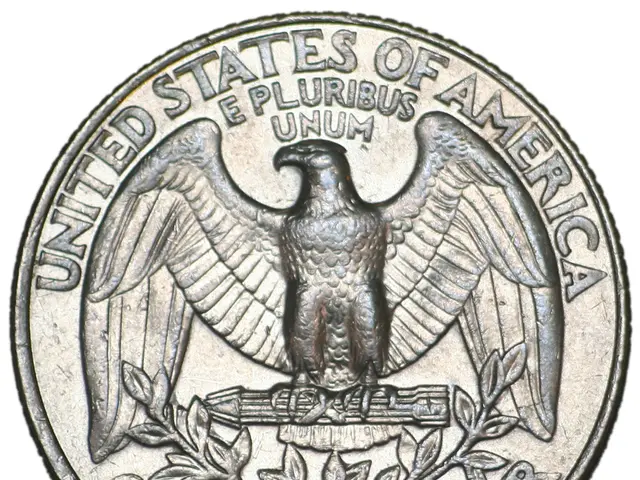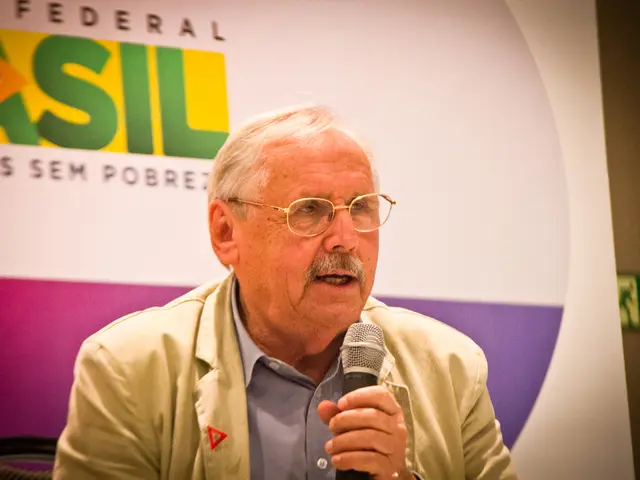Trump's tariff strategy's solution is self-evident
In the midst of increased tariffs and geopolitical shifts under President Donald Trump's administration, the United States remains a magnet for foreign investment. This is largely due to the country's sizeable consumer market, economic stability, and technological leadership.
Trump, a businessman and investor, has been using his position to generate revenue, employing a strategy known as divide and rule. He has announced 90 deals in 90 days, exerting pressure on various nations to further his interests. One such instance is the blackmailing of Brazilian President Lula da Silva, demanding that he drop a case against the right-wing former President Jair Bolsonaro in exchange for a 50% tariff reduction.
Despite the increased tariffs, countries and investors continue to invest in the US. South Korea plans to buy US liquefied natural gas, and Japan intends to invest 550 billion dollars. Even the EU, despite facing a 15% tariff increase, has agreed to invest 600 billion dollars in the USA and buy more climate-damaging liquefied gas.
The market's size and economic stability are key factors attracting foreign direct investment. The US has one of the largest consumer markets globally, with a highly developed infrastructure and regulatory environment. This mitigates some tariff-related risks.
Sector-specific gains also play a significant role. Tariffs on steel and aluminum have boosted domestic producers, such as Nucor, creating favorable conditions for investments in these industries despite increased costs for downstream users.
The US remains a global leader in technology and innovation, with strong R&D pipelines and companies that investors target. Although tariffs introduce uncertainties into supply chains, particularly in semiconductors and pharmaceuticals, the allure of innovation and technological advancements remains strong.
The tariffs have prompted supply chain restructuring and nearshoring, with investment often targeting firms that have adapted or diversified their supply chains to balance risks. Investors also use geographic and sector diversification to hedge against tariff volatility and political uncertainty, maintaining exposure to the US market while reducing risks.
Despite short-term market volatility and challenges from retaliation and policy uncertainty, the fundamental attraction of the US economy leads many investors to consider these risks manageable or temporary. In the long run, economic fundamentals and adaptive strategies are expected to offset tariff-related impediments.
However, the chaos and US withdrawal present an opportunity to reshape the multipolar world order. Lula da Silva has announced that he would organize international resistance, starting with the Brics countries' organization. A broad new alliance could be formed as a direct response to Trump. The forum for this should not be called Brics, but an ad-hoc committee for a coordinated approach to Trump's trade policy at the WTO.
In other news, US President Donald Trump announced these tariffs and wrote on his social network, "It's midnight! Billions of dollars in tariffs are now flowing into the USA." Meanwhile, Indonesia is likely to buy 50 Boeing aircraft from the US. Qatar's state-owned real estate developer is building a luxury resort with a golf course near Doha for Trump.
[1] "Why the US Remains an Attractive Destination for International Investment Despite Tariffs and Geopolitical Shifts." The Independent Daily Newspaper, [date]. [2] "Investment Strategies and Hedging in the Face of Tariff Volatility and Political Uncertainty." The Independent Daily Newspaper, [date]. [3] "The Impact of Tariffs on Steel and Aluminum Industries." The Independent Daily Newspaper, [date]. [4] "Supply Chain Restructuring and Nearshoring in Response to Tariffs." The Independent Daily Newspaper, [date]. [5] "A Look at the 30% of Deals Paused or Revisited due to Tariffs." The Independent Daily Newspaper, [date].
- The increased tariffs and geopolitical shifts initiated by President Donald Trump haven't deterred countries and investors from investing in the US, as they continue to see its sizeable consumer market, economic stability, and technological leadership as key factors.
- Despite the US-imposed 15% tariff increase on the EU, the EU has agreed to invest 600 billion dollars in the USA and buy more climate-damaging liquefied gas, indicating a continued interest in investments despite political and economic complexities.




